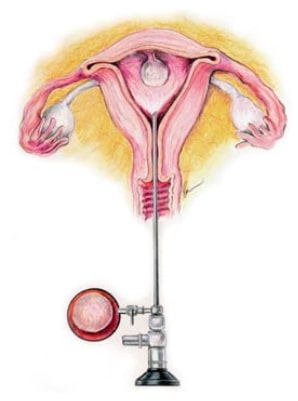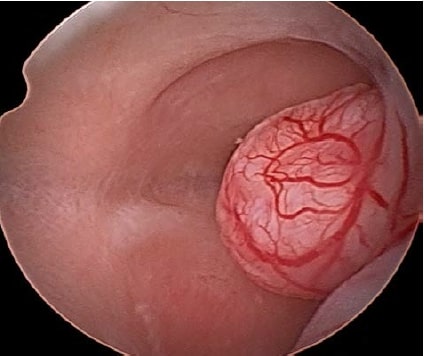Diagnostic Hysteroscopy
Diagnostic hysteroscopy and dilation and curettage (D&C), are common gynecologic procedures performed to evaluate the inside of the uterus. Hysteroscopy allows your physician to see inside the uterine cavity (where you menstruate from) with a very small camera. This allows your physician to detect the presence of problems such as polyps (soft tissue growths) or fibroids (muscle growths) in the uterine cavity. If something is seen, it can usually be removed at the same time.
Dilation and curettage allows for removal of any tissue from the uterus to check for any pre-cancer or cancerous changes. This is often performed at the same time as a hysteroscopy. Hysteroscopic polypectomy is a surgery performed to remove uterine polyps. Uterine polyps are non-cancerous overgrowth of cells in the inner wall or lining of the uterus.
Why are these procedures performed?
Many women will experience abnormal uterine bleeding at some point during their lives. In many cases, evaluation of the uterus is an important part of the process. Hysteroscopy allows the physician to look directly inside the uterus, providing the most accurate diagnosis of possible causes of bleeding.
A very small camera, called a hysteroscope, is placed through the vagina, through the cervix (the opening of the uterus), and up into the uterine cavity. Tissue can be visualized and removed, either with the camera directly or with smaller instruments called curettes. The tissue is then evaluated by a pathologist who can check for the presence of changes such as cancer or precancer.
A woman may want to consider having a hysteroscopy and/or D&C if she has the following symptoms:


What are the risks of this procedure?
While these are often referred to minor procedures, as with any procedure, there are associated risks. These procedures can be performed in both an office setting as well as in the operating room (OR). Risks include:
What should I expect after surgery?
Recovery from these procedures should be minimal with rapid return to normal activities within a few hours to 1-2 days.
When should I call my doctor?
Significant complications from these procedures are unlikely. You should notify your health care provider if you experience the following:

